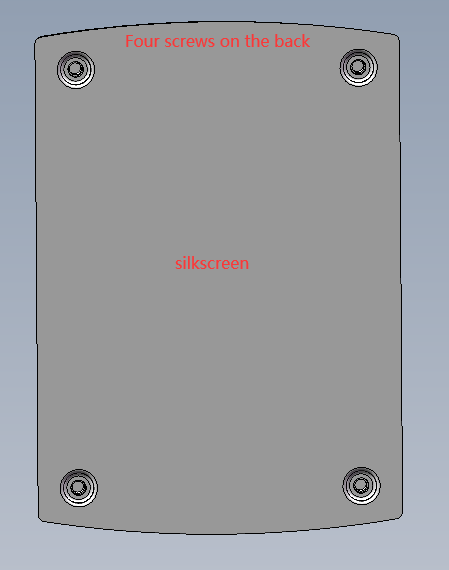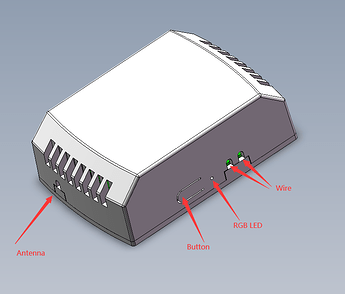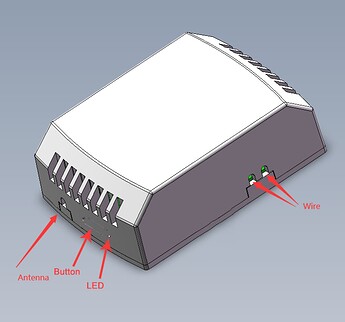Let me know if you want to part with them. I’m still looking for a couple.
Can confirm this is possible. I had one working this way as a scene controller for 3 or 4 months with no issues.
This is where you’re testing the limits of my knowledge. Short answer - dimmer circuit does not work for AC fan motors.
First, there are many different types of motors. If you were talking about a DC (Direct Current) motor, then a dimmer-like function where you are varying the voltage to the motor might do. In more modern fans, DC motors are used, but usually the voltage is not the full 120 volt, but goes to something like 24 volts as a peak. DC motors also often use something called a Hall Effect Sensor which provides for speed and blade position sensing. Generally, these DC motors have a special DC canopy module. There are a number of (in my opinion) big advantages to DC motors - including that they don’t create the humming noise that you often have in AC ceiling fans (this alone is a reason I plan to eventually replace all my ceiling fans with ones using DC - they are about the same price and don’t make an annoying hum when you’re trying to sleep!). The industry seems to be transitioning to DC, but its slow going.
Despite the advantage of DC fan motors, most ceiling fans are AC (Alternating Current) fans. In these fans (and this is where my knowledge about this is limited), the run capacitor causes a phase difference between voltage and current (the two are related but distinct components of AC electricity). Think of a phase difference like you would think of seeing a plane in flight - there is a time delay between where you see the plane and where your ears indicate the sound is coming from (a phase difference). That difference in delay between sight and sound is a rough comparison to a phase difference between voltage and current. The degree of that phase difference impacts how much 'kick" the magnetic windings in an AC fan get as they rotate. The end result is that different capacitors will impact this shift in timing between voltage and current, and this will impact how much force is exerted in the motor and, thus, change the speed.
It would be impossible for me to explain this much further - I’m pretty much at my limits here but this should give the basic principles supporting why dimmers don’t work for AC ceiling fan motors.
It’d be nice if people clueless about motor theory would stop trying to explain how motors work.
If dimmers or electronics can’t work on fans then why does these exist?
Canarm Speed Control for 2 Ceiling Fans, Model# CN5041 | Northern Tool
KB Electronics Vari-Speed AC Motor Speed Control - Solid State | B2016183 - GLOBALindustrial.ca
I’ve personally seen run of the mill AC ceiling fans working with that type of speed control. The heat they produce is the biggest issue. A capacitor will reduce the voltage while generating very little heat.
FYI, DC fan motors don’t actually run on DC. The electronics do, but the motor itself is provided varying frequency AC via the electronics.
One requirement that should be added up front in the design specs and not just in the comments is the use of the MG24 chip in this module.
Speaking of the MG24, are you guys going to be using one of the AI variants? It would be great to set up my very own personal SkyNet at the house.
Project Update: First iteration of the canopy module provided to us. Ahead of schedule.
I went back and asked for the button and LED to be placed in the front where the antenna is per my initial request.
In addition, I asked if the button could mimic our config button for consistency and the RGB LED could match our Gen 2 On/Off for consistency and their response was that we’d have to make the module bigger to accommodate for the config button as it needs more depth to depress than the design they proposed (not sure if you can tell from the picture, but the button is essentially flat against the depression pad). I figured we want this as small as possible, so every inch/cm counts.
As for the LED matching the On/Off switch, they came back with the ol’ we didn’t even quote you for the LED and added it in later per your request after your proposal for no additional fee, so if you want to make it custom, then it will incur a per unit cost increase and additional tooling, which I suppose was fair. So, we’re going to keep the design they proposed since no one is going to see the canopy module anyway. I just asked that they make the LED big enough for people to see it.
So, here’s my new mockup (haven’t gotten the final version yet, but this is what I anticipate it to look like:
Top/Side
NOTE: I know this looks large, but the dimensions are actually really small compared to the old module. Targeting the following dimensions (there may be some adjustment depending on what ETL comes back with): 2.1" W x 3.0" H x 1" D
Top

Bottom

–
Regarding the DC and Reverse compatibility, I still have a note out to them to provide feedback. I’m awaiting their response.
Anything I’m missing?
Yes, this is a requirement. Looks like it didn’t copy over from my PPT that I shared with them:
Good catch!
I’m not sure what this is, but sounds cool. Can you share what you’re talking about?
I have a question after reading the PPT slide:
Is non-Neutral really a requirement for a Fan Canopy Module? I’m having a hard time imagining a ceiling box capable of holding the weight of a fan but not having a neutral wire. IF they do exist, it must be very rare and keeping it as a requirement has caused limitations and firmware issues in the past. If it can be dropped as a requirement it will save hassles and headaches with the firmware IMHO.
For that matter how would the fan or the light be powered if there’s no neutral wire? … Since the canopy goes at the fan, there must be a neutral!
Edit: It’s been pointed out to me offline that the switch I’m referencing (fan switch) will have instances where there is no neutral, but the canopy should always have a neutral except in rare occasions. So, you guys are right, I don’t think it will be necessary.
I guess the good news is maybe we can let the manufacturer realize that since they told us it was possible and once they do and say they can’t do it, we can ask for a price reduction ![]()
I view it as a nice to have, but yes, if it causes too much of a headache we can drop it.
I wanted to maintain consistency with our Fan switch that supports non-neutral. This is typically found in homes where there is a non-neutral ceiling light that was changed out for a ceiling fan.
I have no idea how popular it is, but in looking at my house, there are at least 3 locations that could have it if I wanted to swap the overhead lights out (in fact may do it in my daughter’s room to see how well it works).
In testing non-neutral for the Fan switch, I didn’t stumble upon too many issues other than it only being able to do 2-Speeds vs 3. It works great with an aux switch (although that situation is probably super rare) and hopefully allows us to reach more people that don’t have an option to run a neutral!
I have no clue how this works, I guess we’ll find out!
I imagine the limitations will be the same as the Fan switch in that there will only be a Low and Medium, however.
The way my house is wired for the bedrooms (the only section in my home with older wiring), the main comes into the ceiling fan, so hot and neutral are in the fan, but then the hot goes down to the switch and then back to the fan to complete the circuit.
This is why you dont need a neutral for this setup, because the switch will never use internal relays so you will never close the circuit because that is the job of the canopy module. So aslong as you have power on that circuit the whole time, neutral at the switch isnt needed.
Yeah I had that realization after the fact when a couple people explained it to me. I was so used to the non-neutral setup at the switch level, that I didn’t even think about how it looks at the canopy, which is exactly like you described it!
Dude im so pumped… i cannot wait to get my hands on one of these. Unfortunately imma not use that canopy module but still… i cant wait…
Any way you can sell the switch on its own without the canopy module?
Maybe I’m misunderstanding, but are you thinking this is going to be sold as a switch/module combo? This project is for a canopy module only. You can use the existing Blue 2-1 switch to bind to the module. Or when it’s released, the Blue button controller.
Your post is a little confusing because you’re pumped for this, but then you’re not going to use the module. The module is the only piece to this. I’m thinking you might think this is for a switch/module combo, which isn’t the case. So for this Zigbee version, there is no switch you can “sell on it’s own”. Just buy a currently available Blue 2-1.
Oh wow youre correct. I totally misunderstood… i was under the assumption that this was going to be a zigbee replacement for the lzw36, which was a fan and module combo. Daaaang. Im heart broken as i really wanted the switch itself. Thanks for pointing that out.
Yeah, sorry about that. We were discussing offline, and I mentioned that this was going to be like telling you there is no Santa Claus . . .
Lmfao, that literally made me laugh a bit. And yes, yes it did feel like that haha. Dang. sigh heres to hoping courtney finds some old stock in the back… im hoping for a miracle lmao.
I suppose I could let one of my refurb units go….
AND I’m pretty sure it could be used with the Blue Fan switch (VZM35-SN) also
If it’s the 2-button switch you’re looking for, Project Walt is what you want to be following. It will be capable of a 2-button configuration. And if you wanted to bind it to this canopy module to essentially build your own LZW36, it should be possible.


